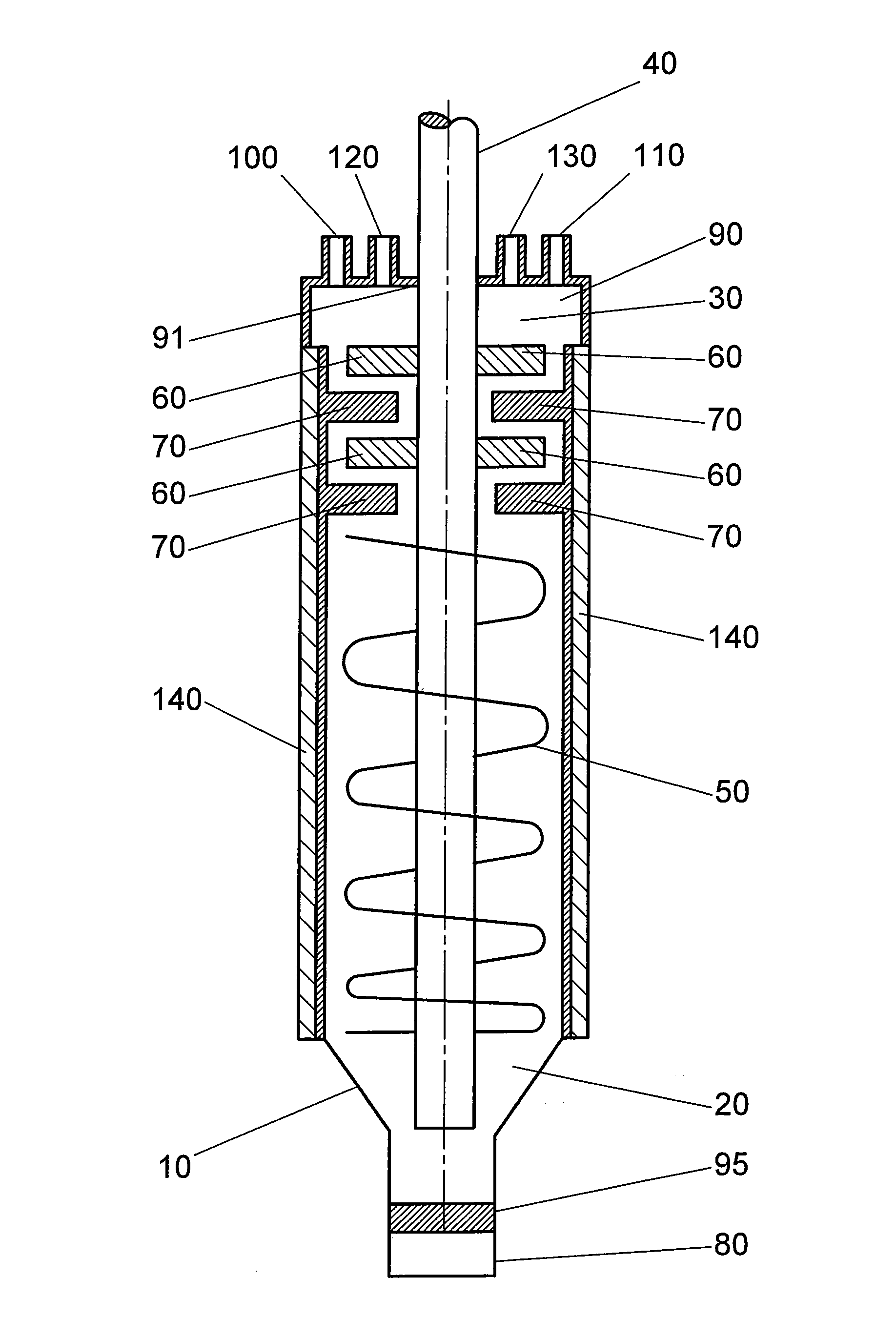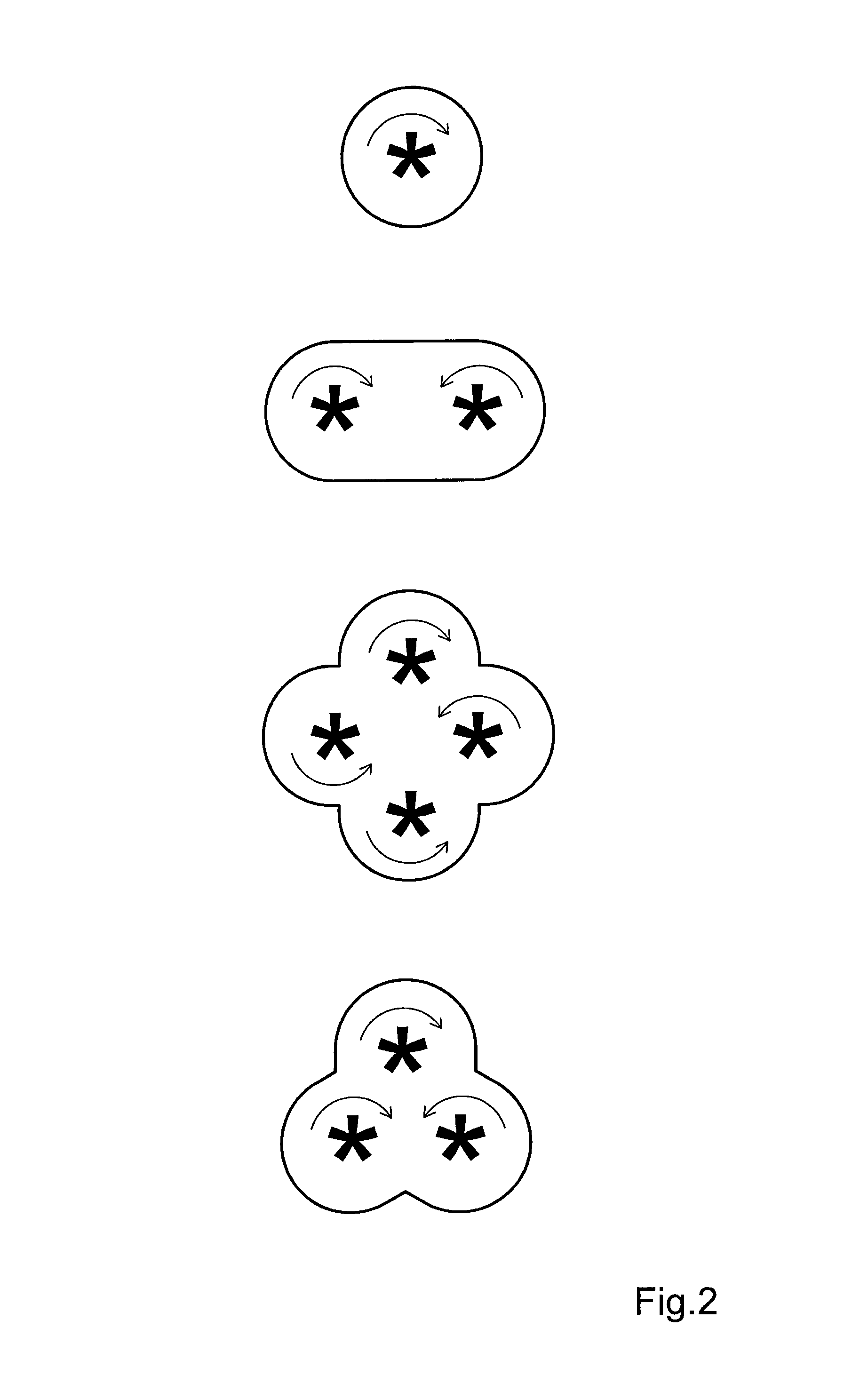PMMA bone paste mixing apparatus and method
a mixing apparatus and bone paste technology, applied in the direction of dough mixing/kneading machines, dental prosthetics, dental preparations, etc., can solve the problems of affecting the mixing of components must be performed in an uninterrupted process, and the need for additional vacuum pumps. , to achieve the effect of improving the quality of cement, and improving the quality of bone pas
- Summary
- Abstract
- Description
- Claims
- Application Information
AI Technical Summary
Benefits of technology
Problems solved by technology
Method used
Image
Examples
Embodiment Construction
[0016]The device according to the invention allows the production of poly(methyl methacrylate) bone-cement pastes. Poly(methyl methacrylate) bone-cement pastes involve paste-like compositions that contain the polymer poly(methyl methacrylate) and are preferably used for the production of bone cement. The poly(methyl methacrylate) bone-cement pastes can, on one hand, be brought to polymerization with the production of bone cement, in contrast to suitable initiator systems, for example, directly by the action of energy and thus without mixing with additional components. On the other hand, the bone cement can also be produced by the mixing and curing of more than one bone-cement paste. These bone-cement pastes themselves are generated according to the invention with the use of the device described herein. Here, at least one powder-like cement component A and one liquid monomer component B are mixed with each other.
[0017]The monomer component B comprises at least one monomer. The monome...
PUM
| Property | Measurement | Unit |
|---|---|---|
| temperature | aaaaa | aaaaa |
| weight percent | aaaaa | aaaaa |
| inclination angle | aaaaa | aaaaa |
Abstract
Description
Claims
Application Information
 Login to View More
Login to View More - R&D
- Intellectual Property
- Life Sciences
- Materials
- Tech Scout
- Unparalleled Data Quality
- Higher Quality Content
- 60% Fewer Hallucinations
Browse by: Latest US Patents, China's latest patents, Technical Efficacy Thesaurus, Application Domain, Technology Topic, Popular Technical Reports.
© 2025 PatSnap. All rights reserved.Legal|Privacy policy|Modern Slavery Act Transparency Statement|Sitemap|About US| Contact US: help@patsnap.com



